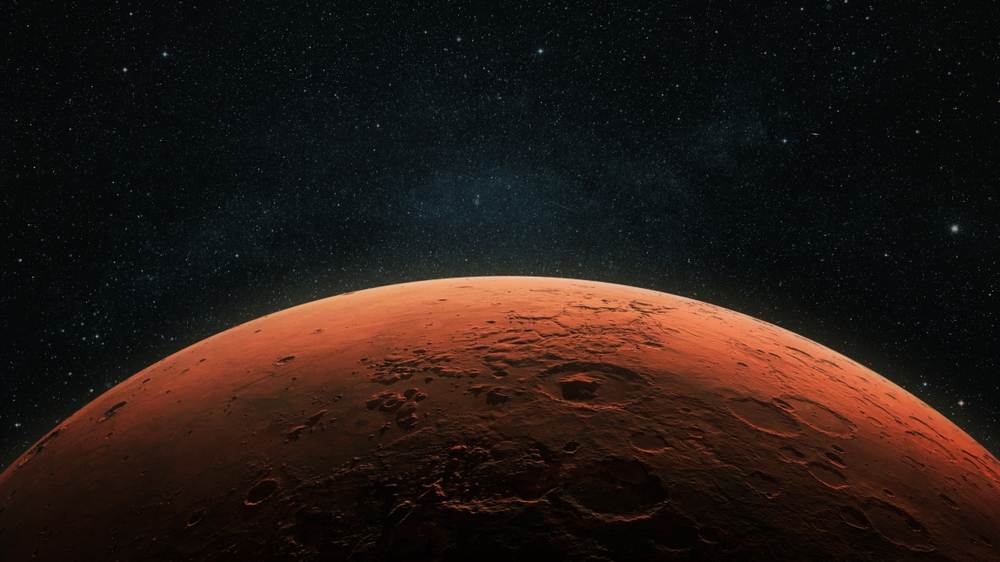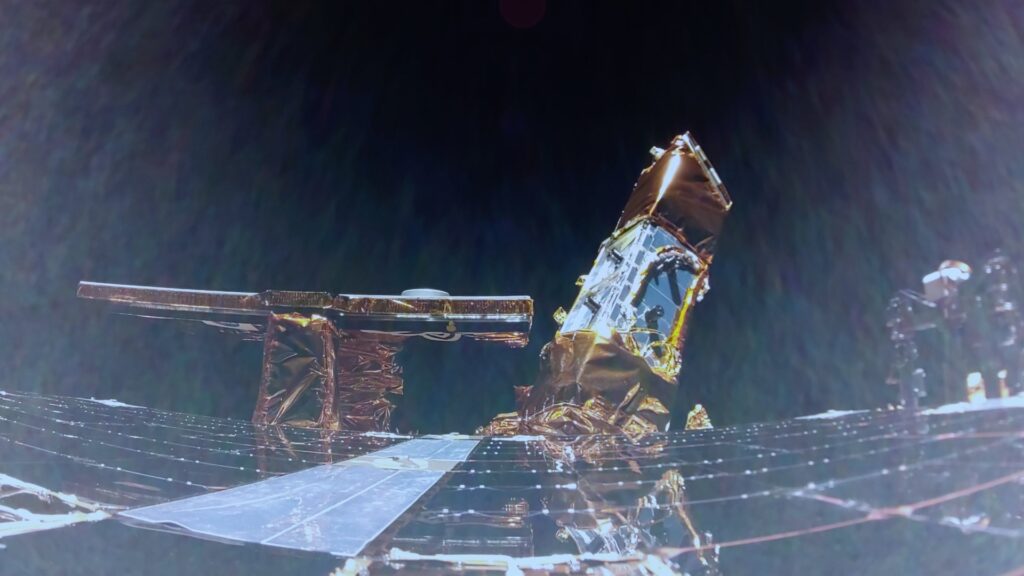Artemis May be a Steppingstone to Mars, and other Missions to the Red Planet

NASA Space Technology Named after the Roman God of War, the red planet has yielded countless insights about our extraterrestrial backyard. From hosting the tallest mountain in the solar system, Olympus Mons, to massive underground ice deposits, Mars is full of surprises.
And like any diligent explorer, NASA is set on uncovering more of them. Here’s the insider scoop on the latest findings from our nearest cosmic neighbor.
NASA Space Technology The Curiosity Rover
NASA’s Curiosity rover, a seasoned Mars explorer, reached the Gediz Vallis channel in July 2024. This area resembles a large, winding riverbed from space, and is thought to have been potentially shaped by ancient waterways. For the next several months, Curiosity will roam the terrain, attempting to decipher whether debris flows or prehistoric rivers carved the structure.
Operational since 2012, Curiosity has been on a mission to study Mars’ climate and geology and initially assessed whether the Gale Crater ever offered conditions favorable for microbial life. Equipped with a cocktail of scientific instruments and sensors, Curiosity has made radical discoveries, including detecting methane on Mars — a potential indicator of microbial life in the eyes of scientists.
Images from Curiosity in May 2024 also featured strange speckswhich scientists now know are vestiges of the May 20 geomagnetic storm that raced across the solar system that year.
Read More: What the Curiosity Rover Achieved, and What’s to Come
NASA Space Technology Perseverance on Mars
But let’s not forget Perseveranceeither. The relative newbie on the Martian block, this rover began its mission in 2021 by exploring the Jezero Crater, a former lakebed believed to be a possible hotspot for ancient life.
Recently, Perseverance captured images of its latest big target: the crater’s rim. This current mission, which started in Spring 2024, involves climbing the rim to explore older rockswhich may hold more secrets about Mars’ geological past.
Perseverance has also been busy collecting rock samples that future missions could bring back to Earth. These samples are expected to shed light on the history of water on Mars and its potential for life. The Mars Sample Return mission is an ambitious multi-stage project, starting with Perseverance depositing cached samples at designated spots.
Following that, a planned future mission with the European Space Agency (ESA) will send another fetch rover to collect these tubes, which experts will load onto a Mars Ascent Vehicle to launch them into orbit. Then, another spacecraft will capture the orbiting samples and return them to Earth for extensive analysis. As expected, the operation is very complex, and budget constraints have resulted in setbacks for such ambitions.
Read More: Jezero Crater: A Closer Look at the Perseverance Rover’s Landing Site
NASA Space Technology What About the Ingenuity Helicopter?
Tucked beneath the Perseverance rover was another pioneering machine. The Ingenuity Mars Helicopter, initially designed for just five test flights, wrapped up its mission after nearly three years of groundbreaking work. The tiny, robotic helicopter was designed to prove that powered, controlled flight is possible on another planet.
The probe more than delivered on that goal. Ingenuity completed an astonishing 72 flightsproviding invaluable data and acting as a scout for Perseverance. Its final flight on January 18, 2024, was cut short due to rotor blade damage during landing. Flight on the Red Planet is inherently challenging due to the thin atmospherewhich is around 1 percent as dense as the Earth’s.
Ingenuity’s success has opened the door for future aerial missions on Mars, proving that flying on another planet is not just a pipe dream but a reality. This mission will inform the design and operation of future Mars helicopters that could assist with both human and robotic exploration.
Read More: The Path to Ingenuity: One Man’s Decades-Long Quest to Fly a Helicopter on Mars
NASA Space Technology Other Missions to Mars
Beyond the rovers, NASA has several broader Mars missions that continue to push the boundaries of our knowledge. This includes an array of orbiting satellites.
The Mars Reconnaissance Orbiter (MRO) has been orbiting the planet since 2006 and is equipped with a suite of powerful instruments, including the High Resolution Imaging Science Experiment (HiRISE) camera.
MRO has been capturing high-resolution images of the Martian surface: an essential task for selecting future landing sites and studying the planet’s climate and geology. In April 2024, MRO provided detailed images of dust accumulation on the now defunct InSight landerhelping scientists understand the planet’s seasonal changes and weather patterns.
Circling with MRO is Mars Odysseywhich launched in 2001 and holds the record for the longest-active spacecraft in orbit around a (non-Earth) planet. Its Gamma Ray Spectrometer (GRS) detected significant amounts of hydrogen in the mid-latitudes, indicating water ice just below the Martian surface.
In 2023, the Subsurface Water Ice Mapping (SWIM) project used data from Odyssey to create updated maps showing high concentrations of subsurface ice, highlighting promising locations for future exploration. These sites are crucial for future human missions by providing water and shielding from radiation, and for preserving potential biosignatures of ancient life.
Read More: 5 Martian Mysteries That Have Scientists Scratching Their Heads
NASA Space Technology What’s Happening with Artemis?
Of course, it’d be remiss to leave out updates on one of NASA’s most ambitious projects yet: the Artemis missions. Artemis is essentially NASA’s big comeback to the Moon, but with a twist — it’s also a steppingstone to Mars.
The Artemis program is gearing up to launch Artemis IIthe first crewed mission around the Moon, in September 2025. Four crew members will circle around the moon, testing NASA’s Space Launch System (SLS) rocket and the Orion spacecraft in deep space.
The missions also aim to set up a sustainable presence, with plans to build a base camp and develop new technologies for living and working on the lunar surface. The lessons learned and technologies developed will be crucial for future Mars missions.
A key part of Artemis is the Gatewaya planned space station that will orbit the Moon. The Gateway will serve as a staging point for lunar missions and a platform for scientific research.
By honing life support systems, surface mobility, and sustainable power solutions on the Moon, NASA will be better equipped to send astronauts to Mars in the 2030s. In effect, the program is laying the groundwork for humanity’s next giant leap — setting foot on the Red Planet.
Read More: Artemis Prepares to Take People to the Moon and Beyond
NASA Space Technology Article Sources
Our writers at Discovermagazine.com use peer-reviewed studies and high-quality sources for our articles, and our editors review for scientific accuracy and editorial standards. Review the sources used below for this article:
-
NASA. A Guide to Gale Crater
-
Johns Hopkins. Study Predicts Best Times for Rover to Sample Mars Methane in Search for Life
-
NASA. Curiosity Sees Specks Caused By 2024 Solar Storm While Recording a Wind Gust on Mars
-
NASA. Perseverance Rover
-
NASA. Rock Sampled by NASA’s Perseverance Embodies Why Rover Came to Mars
-
NASA. Mars Sample Return
-
The European Space Agency. Comparing the Atmospheres of Mars and Earth
-
Universe Today. Mars InSight Has One Last Job: Getting Swallowed by Dust on the Red Planet
-
NASA. Mars Odyssey
-
Phys.org. New mapping tools will find subsurface water ice on Mars
-
NASA. Artemis
-
NASA. Gateway
Discover more from Tamfis Nigeria Lmited
Subscribe to get the latest posts sent to your email.



 Hot Deals
Hot Deals Shopfinish
Shopfinish Shop
Shop Appliances
Appliances Babies & Kids
Babies & Kids Best Selling
Best Selling Books
Books Consumer Electronics
Consumer Electronics Furniture
Furniture Home & Kitchen
Home & Kitchen Jewelry
Jewelry Luxury & Beauty
Luxury & Beauty Shoes
Shoes Training & Certifications
Training & Certifications Wears & Clothings
Wears & Clothings
















